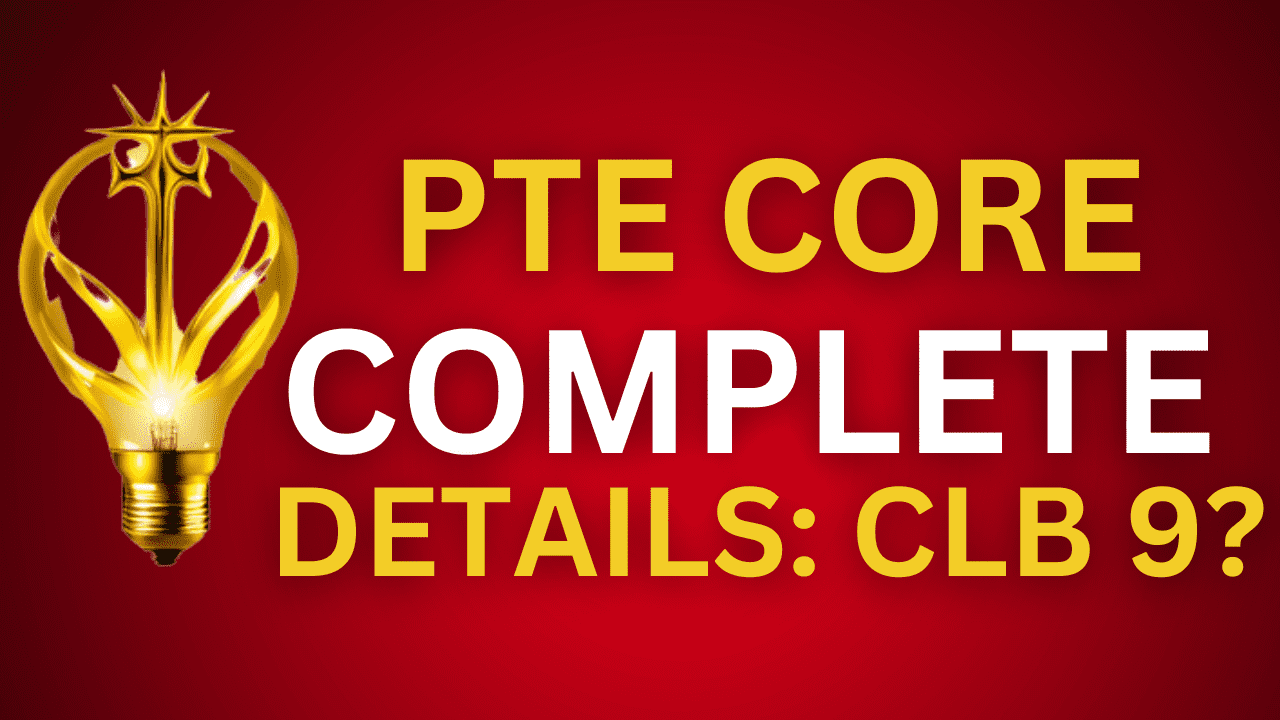The PTE Core Test For Canadian Immigration – Everything You Need To Know!
Effective January 30, 2024
Immigration, Refugees, and Citizenship Canada (IRCC) has recently announced a significant update for those seeking to immigrate to Canada. Starting January 30, 2024, the Pearson Test of English (PTE Core) language test from Pearson Canada Inc. will be accepted for Canadian immigration purposes. This marks a pivotal change, as PTE Core was previously not recognized for this purpose.
Electronic Test Results Now Accepted
In a move to streamline the application process, IRCC will also accept electronic copies of language test results. This development simplifies the submission of essential documents for applicants.
PTE Core vs. PTE Academic for Study Visas
It’s crucial to understand the distinction between PTE Core and PTE Academic tests. While PTE Core is now valid for permanent residency and economic immigration programs, it is not acceptable for the Canadian Study Visa or Permit under the Student Direct Stream (SDS). PTE Academic remains the relevant test for SDS study visas and permits, along with three additional new English proficiency examinations introduced as of August 10, 2023.
Scope of PTE Core
The PTE Core is applicable for various economic immigration programs, including:
- Express Entry categories
- Provincial Nominee Programs (PNPs)
- Caregivers
- Agri-Food Pilot
- Rural and Northern Immigration Pilot (RNIP)
- Economic Mobility Pathways Project (EMPP)
- Atlantic Immigration Program
- Quebec Skilled Workers
- Business Class
Language Equivalency Chart for PTE Core
The Canadian Language Benchmark (CLB) levels are a standard measure for assessing English proficiency for immigration to Canada. Below is the official IRCC CLB equivalency chart for the new PTE Core Language Test:
|
CLB Level |
Reading |
Writing |
Listening |
Speaking |
|
10 |
88-90 |
90 |
89-90 |
89-90 |
|
9 |
78-87 |
88-89 |
82-88 |
84-88 |
|
8 |
69-77 |
79-87 |
71-81 |
76-83 |
|
7 |
60-68 |
69-78 |
60-70 |
68-75 |
|
6 |
51-59 |
60-68 |
50-59 |
59-67 |
|
5 |
42-50 |
51-59 |
39-49 |
51-58 |
|
4 |
33-41 |
41-50 |
28-38 |
42-50 |
|
3 |
24-32 |
32-40 |
18-27 |
34-41 |
Stay Updated with HZAD EDUCATION and your Immigration News!
Subscribe to our blog more the latest immigration news!
How is a PTE test scored?
PTE tests, including the PTE Core, stand out for their accuracy and fairness, thanks to computer scoring technology. Without the involvement of a human examiner, these tests offer an unbiased assessment of your English language skills.
A Closer Look at PTE Core Scoring
PTE Core features 19 different question types, each scored uniquely. While some, like multiple-choice questions, are assessed based on correctness, others are evaluated for the quality of response and adherence to word count requirements. Dive into the PTE Core Score Guide for a detailed breakdown of the scoring system.
Your Personalized Score Report
Post-test, you’ll receive a Score Report and a Skills Profile. The Score Report gives you an overall score (ranging from 10 to 90) and individual scores for listening, reading, writing, and speaking. These scores, aligned with the Global Scale of English (GSE), highlight your strengths and areas for improvement.
Decoding Your Skills Profile
Included in your Score Report, the Skills Profile offers an in-depth analysis of your performance in each language skill. It also provides personalized recommendations to enhance your English proficiency, particularly beneficial if you’re looking to improve specific areas.
Check out our top PTE Core Course here: https://hzadeducation.com/product/15-hour-all-inclusive-pte-course/
PTE Core Scores and CLB Comparison
For those taking PTE Core for a Canadian visa, understanding how PTE scores align with Canadian Language Benchmarks (CLB) levels is crucial. A detailed comparison table (available for download as a PDF) helps you gauge the score needed to meet your Canadian migration goals. Always check the official Canadian Government visa pages for the latest requirements before your test.
PTE Core Test-Specific Points:
The PTE Core evaluates everyday English skills essential for living and working in Canada, covering speaking, writing, reading, and listening. The test, which has a duration of two hours, is structured into three parts:
- Speaking and Writing (50 minutes)
- Reading (30 minutes)
- Listening (30 minutes)
Conducted in over 400 locations worldwide, the PTE Core is accessible to candidates globally.
Scoring and Results
Pearson, the administering body, employs a combination of human and AI scoring to ensure fairness and reduce bias. Typically, test results are available within two days, making it a convenient option for candidates in a time crunch.
The Importance of Choosing the Right Test
It’s crucial for immigration candidates to select the appropriate test for their needs. The PTE Core, which replaces the previous PTE Essential test, is one among several tests offered by Pearson, including the PTE Academic. Candidates should verify the test requirements for their specific immigration program to avoid any mix-ups.
BEST FREE PTE Core Videos and Advice: https://www.youtube.com/@hzadeducation-coachingcent986
Five Accepted Language Tests for Canadian Immigration
With the introduction of the PTE Core, IRCC now recognizes a total of five language tests for immigration purposes:
- CELPIP General Test (English)
- IELTS General Training (English)
- PTE Core (English)
- TEF Canada (French)
- TCF Canada (French)
These tests assess proficiency in reading, writing, listening, and speaking. Depending on the immigration program, candidates may need to meet varying criteria across these skills.
Program-Specific Language Requirements
For instance, under the Express Entry-managed programs:
- Federal Skilled Worker Program (FSWP) requires a minimum CLB level of 7 in all skills.
- Federal Skilled Trades Program (FSTP) requires a minimum CLB level of 5 for speaking and listening, and at least level 4 for reading and writing.
- Canadian Experience Class (CEC) necessitates either a minimum CLB level 7 or level 5, depending on the National Occupation Classification (NOC) skill level of the job.


